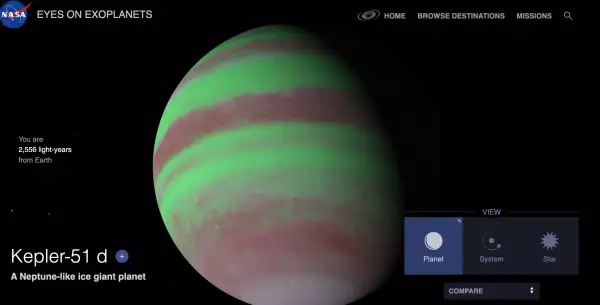
Scientists Uncover Fluffy Planet, Likening Its Density to Cotton Candy
In an astronomical marvel, scientists have uncovered a colossal planet, boasting a density akin to cotton candy. This celestial body, located a staggering 1,200 light-years away from Earth, defies conventional expectations.
Introducing Exoplanet WASP-193b
Named WASP-193b, this newly identified exoplanet lies beyond our solar system. According to a study published in Nature Astronomy on May 14, NASA confirms that nothing of its kind exists within our solar neighborhood.
 WASP-193 B. Photo NASA
WASP-193 B. Photo NASA
Imagine a planet 50% larger than Jupiter, our solar system's behemoth, yet possessing nearly half its density. Such is the enigma of WASP-193b. Its exceedingly low density renders it an oddity among the over 5,000 exoplanets cataloged by scientists to date. Gathering data on this peculiarity took a painstaking four years, reports MIT News.
Among the sparse category of ultra-low-density planets, only one, the Neptune-like Kepler-51d discovered a decade ago, surpasses WASP-193b in its fluffiness. "Finding such massive objects with such negligible density is extraordinarily rare," remarks lead author and MIT postdoc Khalid Barkaoui. "For 15 years, the mystery of 'puffy Jupiters' has perplexed us, and WASP-193b is an extreme exemplar of this class."

Kepler-51d planet. Photo: NASA
WASP-193b falls under the "super-puff" classification, describing exoplanets with densities remarkably reminiscent of cotton candy. With an estimated density of merely 0.059 grams per cubic centimeter, it is a mere 0.04 grams per cubic centimeter denser than actual cotton candy. By contrast, Jupiter’s density is 0.14, and Earth’s is a hefty 5.51 grams per cubic centimeter.
Hypotheses suggest WASP-193b is predominantly composed of hydrogen and helium, giving rise to its enormously inflated atmosphere. Yet, the mechanisms behind such significant atmospheric expansion remain elusive. "This planet defies all current formation theories," says Francisco Pozuelos, an astronomer at the Instituto de Astrofisica de Andalucia. "It's an outlier in every sense."

Photo: unsplash.com/planetvolumes
"The planet’s feather-light nature makes it hard to compare to any solid-state material," notes Julien de Wit, MIT professor and study co-author. "Its similarity to cotton candy arises because both are predominantly air, making the planet incredibly fluffy."
Initially, the data yielded perplexingly low densities, prompting repeated analysis to confirm the findings. "The results were so unusual that we had to verify them multiple times," Pozuelos adds. "The planet’s density is indeed extraordinarily rare."
In summary, the discovery of WASP-193b not only broadens our understanding of planetary formation but also challenges existing astronomical paradigms with its almost surreal characteristics.


